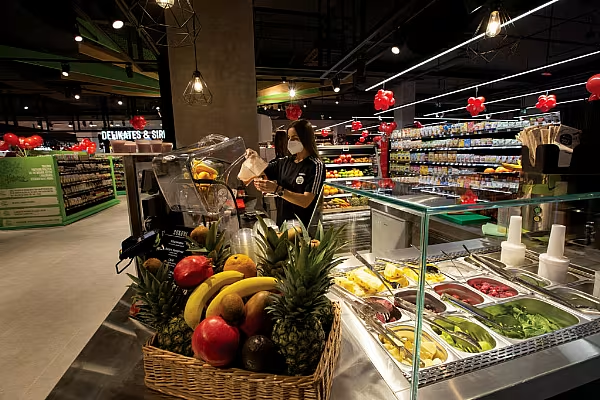Serbia’s grocery retail market grew by 4.8% last year, finishing 2020 with a turnover of €4.8 billion.
On a year-on-year basis, non-food sales grew 6.4% in value terms, while food sales were 5.2% higher in the same period, according to Nielsen data and the annual In Store report on the state of the Serbian retail market.
The total market share of the Top 10 retail chains in Serbia increased from 43.0% in 2019 to 45.6% in 2020, a percentage that is lower than in more developed countries in the EU and some neighbouring countries.
Maxi Leads The Market
Maxi (Delhaize Serbia, pictured) retained its leadership position in Serbian grocery, increasing its share from 10.5% to 11.2%.
However, Lidl has now moved into second place with 8.0% (from 5.8%), pushing Idea (Mercator-S/Fortenova Group) to third place with 7.2%, the same market share as the previous year.
Another Mercator-S banner, Roda, placed fourth with 3.7% (down from 4.1%), followed by DIS, which holds its market share stable at 3.4%.
The top ten rounds off with Univerexport (3.2%), Aman (2.7%), Tempo/MegaMaxi (2.6%), Gomex (2.1%) and DM (1.5%).
At the end of 2020, a sixth foreign player entered the Serbian market (after Delhaize, Fortenova, Veropoulos, Lidl and DM) – Russian discounter MERE, which plans to open 100 stores across Serbia.
Retail Outlets
Meanwhile, the number of retail outlets continues to drop, with 20,071 stores open in 2021 – 3% fewer than in 2020.
In terms of store numbers, the DTL - Domaci Trgovinski Lanac consortium, which consists of 13 members, is national market leader with 709 stores, followed by Delhaize Serbia (455) and TSV-Diskont (400).
The top 10 in terms of new store openings also includes Mercator-S (338), Aman (260), Gomex (202), Univerexport (172), Aroma Market (61), Lidl Srbija (51) and DIS (39).
Network expansion will continue in 2021, with Delhaize Serbia planning to open 21 outlets this year, ahead of DTL (20), Gomex (15), Mercator-S (13), Univerexport (11), Lidl Srbija (6), DIS and Medius (3 each), Sinagoga and Veropoulos (one each).
Growing Categories
The top 10 selling food categories in Serbia last year, in value terms, were alcoholic beer, carbonated juices, ground coffee, ready-to-eat meat products, yogurt, biscuits, cheese, chocolate bars, still water and milk.
As in other markets, online shopping "exploded" during the COVID-19 pandemic, although mostly for non-grocery related categories (clothing, footwear, small household appliances).
The percentage of consumers buying food and beverages online increased from 13% in 2019 to 19% in 2020.
© 2021 European Supermarket Magazine – your source for the latest retail news. Article by Branislav Pekic. Click subscribe to sign up to ESM: The European Supermarket Magazine














